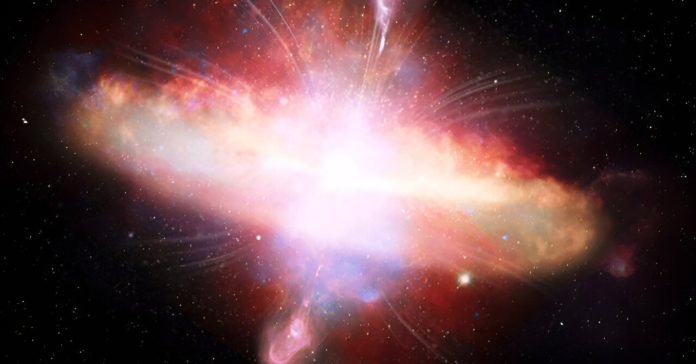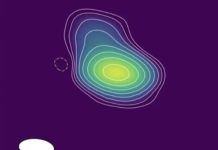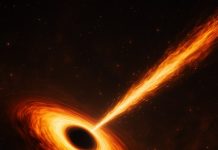
Astronomers, our cosmic detectives, have been busy trying to understand the mysterious objects in our universe called quasars, extremely bright galaxies that have supermassive black holes at their centers.
Supermassive black holes are colossal black holes with masses millions to billions of times that of our Sun!
These are found in the centers of most galaxies, including our very own Milky Way.
Deciphering the mysteries
Our astronomers, led by teams from Newcastle University and Durham University in the U.K., made use of the Dark Energy Spectroscopic Instrument (DESI) to delve deeper into the mysteries of quasars.
They were particularly curious about “red quasars,” which appeared to have more dust around them, making them look red and are not very well understood yet.
Quasars: the bright beacons
Quasars are fascinating because they are some of the brightest objects in the universe.
They emit a lot of light and other types of energy because they have supermassive black holes actively pulling in, or “feeding” on, surrounding materials.
Most quasars emit blue light due to the glowing disk of matter swirling around their central black hole.
However, some quasars look red, likely because they are surrounded by more dust. Scientists are interested in understanding why these quasars are red and what their properties tell us about the galaxies they reside in.
The connection: dust and radio emission
When astronomers studied these red quasars, they found that the amount of dust around a quasar is linked to the strength of radio emissions it produces.
Simply put, the dustier or redder the quasar, the stronger the radio signals it emitted! This important finding was published in the Monthly Notices of the Royal Astronomical Society.
The red quasar puzzle
Dr. Victoria Fawcett of Newcastle University, leading the study, expressed excitement about the quality of data from DESI and discovering more about these rare red quasars. The study analyzed around 35,000 quasars and found that the redder ones had much stronger radio emissions compared to the typical blue ones.
This research suggests a strong connection between the dust in a quasar and its radio emission, providing crucial pieces to the puzzle of understanding red quasars and their role in the evolution of galaxies.
Red quasars and galaxy evolution
This study supports the idea that red quasars play a significant role in galaxy evolution.
They might represent a younger, developmental phase in the life of galaxies, where powerful outflows of gas from the supermassive black hole interact with the surrounding dust, causing shocks and radio emission.
This interaction can lead to the removal of all the dust and gas in the central region of the galaxy, revealing a blue quasar with weaker radio emission.
Unraveling more secrets
Although many questions remain, like whether black hole winds or radio jets are ultimately responsible for enhanced radio emission, Dr. Fawcett is hopeful that ongoing DESI surveys will bring more clarity to the nature of red quasars.
Astronomers are making strides in uncovering the secrets of mysterious red quasars using advanced instruments like DESI.
By studying the dust and radio emissions of these quasars, they are piecing together the role these fascinating objects play in the evolution of galaxies, opening new doors to understanding our vast universe.
Follow us on Twitter for more articles about this topic.
Source: Newcastle University.



